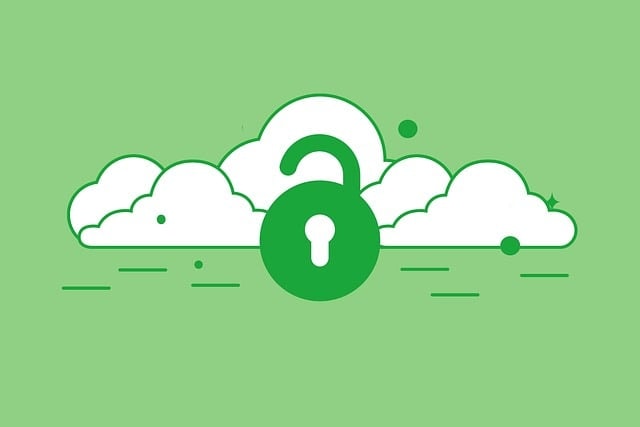Seven Cybersecurity Threats to Cloud Computing

There’s no doubt cloud computing offers many advantages when compared to purchasing and maintaining your own datacenter. Among these are lower CapEx and almost instantaneous scalability. But, with these benefits come significant cloud security risks that organizations must address. Some of these threats are unique to cloud computing while others are applicable to all computing environments. Organizations share responsibility for security implementation with the cloud service provider, which can lead to a loss of visibility and control. Additionally, managing and securing cloud resources presents challenges such as inadequate visibility, data security risks, and compliance issues. What makes these threats worse for most organizations using the cloud is that the cloud provider is a bigger target for threat actors than the organization. In other words, defending your cloud environment is even more critical.
Cloud security threats

The following are seven cybersecurity threats you need to be vigilant about when you shift to cloud-based services.
Cloud security configuration monitoring is crucial for maintaining visibility into cloud services, ensuring security, privacy, and compliance with organizational and regulatory requirements.
1. Data breaches
Breached data exposes important information to the outside world. Effective identity and access management (IAM) controls are crucial in preventing data breaches, which can affect the integrity of your organization and the faith of your customers.
2. Potential fines
If the cloud provider is indeed breached, the data loss and data breaches can expose your organization to potential fines for failing to properly store customer data. The cost of the fines can easily exceed the cost of ramped up cloud security.
3. Misconfiguration
There’s another way cybercriminals can gain unauthorized access to your company’s cloud data: misconfiguration. This is the result of simply failing to implement the proper security controls—as simple as requiring a password—for any external facing system such as a web application or server. You may not think misconfiguration is common, but it is. In fact, it’s number six on OWASP’s Top 10 Web Application Security Risks.
What’s the cause of this common problem? Primarily insecure default configuration settings. A problem made even worse when the systems are easily accessible in the cloud. For cloud computing to work properly, data must move to and from the cloud seamlessly. A hacker can interrupt the movement of data by purposely flooding the network in a distributed denial-of-service (DDoS) attack. This, in effect, causes the cloud services to shut down. With access to the cloud interrupted, your entire organization is essentially out of business until service is restored. The impact of lost time and money easily exceeds the cost to implement strategies to defend against DDoS. Misconfiguration can also lead to reduced visibility and control over network operations, making it harder to manage security settings and resource usage effectively.
4. Unprotected passwords
Unprotected passwords can leave an organization vulnerable – and with large service providers, that’s a lot of employees and a lot of passwords. Encrypting data in cloud storage is crucial to prevent unauthorized access. Best practices such as salting and hashing stored passwords are an essential first step in protecting cloud-based assets. But organizations can do more. Layered security, such as two-factor authentication (in which a user’s password is matched to a single-use encrypted key) increases credential protection. Multi-factor authentication takes that one step further, using biometric identification to protect sensitive data.
3. Multi-tenancy
When you use cloud computing, whether you know it or not, you’re sharing everything with the cloud service providers’ other tenants. That means when a CPU is doing some computations on your data, that same CPU is also doing computations on other tenant’s data at the same time. The same goes for databases. You and the other tenants will frequently store your protected data in the same database. This sharing of services is called multi-tenancy and it poses a very real risk in cloud computing. Multi-tenancy also means you could be sharing resources with a threat actor, who is one step closer to your data.
4. Security flaws
Security flaws or security weaknesses in any of the cloud service provider’s infrastructure, platforms, or applications can put your data at risk, highlighting the importance of understanding the shared responsibility model for security and accounting for these risks when considering your attack surface.
5. Insider threats
Insider threats are also something to be aware of. A single, disgruntled employee, with the proper credentials at the cloud provider can put your company and data at risk. What makes the insider threat even worse is that it’s likely to go undetected for a long time. It’s incumbent upon you to do your due diligence on potential cloud computing service providers, see what their track record is with regard to internal security breaches, and more importantly, how have they remedied them if they occurred?
When shifting operations to the cloud, the transfer of responsibility to the contracted cloud service provider can result in a loss of visibility into network operations, security settings, resource and service usage, and cost. Therefore, it is crucial to set up protocols with the CSP to ensure transparency and alleviate security concerns.
The threat of a cyber incident goes beyond losing data and business interruption. There is the legal fallout from such an incident. First, you’ll have to pay to remedy the situation and then you’ll have to pay for all the damage you caused to your stakeholders. If you’re in a regulated industry like healthcare or banking, then you could be financially liable, even if a data breach was the cloud provider’s fault. That’s why it’s essential you understand the legal relationship between you and your cloud provider and that you get everything in writing.
Next steps to think about

If all these threats seem overwhelming, they shouldn’t be. For starters, cloud computing is maturing, and as it matures and we begin to understand how to mitigate these threats, the risks from these threats diminish. More importantly, you don’t have to tackle cybersecurity cloud threats alone. There are professional cloud security consulting services companies like Cyber Defense Group that specialize in helping organizations like yours put policies, processes and systems in place to minimize the threat from cyber incidents in the cloud. They currently protect over 300 companies and over $10 billion in revenue. If you’re considering moving to the cloud and don’t know where to start with cyber protection, reach out to Cyber Defense Group for a free 30-minute consultation.
